The Temple of Memphis, also known as the Temple of Ptah, is a key archaeological site located in the ancient city of Memphis, once the capital of Egypt. Dedicated to Ptah, the god of creation, artisans, and architects, the temple was central to the religious and cultural life of the city for thousands of years. Ptah was considered the creator god who shaped the world with his thoughts and speech. Memphis, as a major capital during much of Egypt’s ancient history, served as the heart of both political and religious activity. The Temple of Memphis symbolized the power of the pharaoh and the divine approval bestowed upon him by the gods. As the center of religious life in the region, the temple housed rituals and ceremonies that reinforced the pharaoh’s divine rule, ensuring the stability and prosperity of Egypt. Though many parts of the temple have been eroded over the centuries, its legacy still stands as an iconic representation of the cultural and spiritual practices of ancient Egypt, highlighting the significant role religion played in the daily life of the people and in the governance of the kingdom.
- Egypt Tour Magic
- Egypt Tour Packages
- Excursions in Egypt
- Cairo Tours and Excursions
- Hurghada Tours and Excursions
- Soma Bay Tours and Excursions
- Makadi Bay Tours and Excursions
- Sahl Hasheesh Tours and Excursions
- El Gouna Tours and Excursions
- Marsa Alam Tours and Excursions
- Port Ghalib Tours and Excursions
- El Quseir Tours and Excursions
- Dendera and Abydos Day Tours
- Aswan Tours and Excursions
- Luxor Tours and Excursions
- Alexandria Tours and Excursions
- Sharm El Sheikh Tours and Excursions
- Top Rated Tours in 2025
- Optional Excursions in Egypt
- Private Transfer
- Blogs About egypt
- Ancient Egypt
- What You Need To know Before Your First Trip To Egypt
- Best Places to Visit in Egypt 2025
- Top Attractions in Red Sea Resorts 2025
- Top 10 Tourist Activities in Egypt
- Top 30 Activities You Can’t Miss in Egypt
- The Guide to Guided Tours in Egypt
- Egypt’s Ancient and Modern History
- The Nile River
- The Deserts of Egypt
- Historical Sites in Egypt
- Cairo
- Alexandria
- Luxor
- Aswan
- The Red Sea
- Dendera Temple
- El Fayoum Oasis
- Bahariya Oasis
- Siwa Oasis
- Al Alamein
- Marsa Matruh
- Ancient Egyptian gods
- famous Egyptian dishes
- UNESCO World Heritage sites
- About Us
- Why Egypt Tour Magic
- Egypt Tour Magic
- Egypt Tour Packages
- Excursions in Egypt
- Cairo Tours and Excursions
- Hurghada Tours and Excursions
- Soma Bay Tours and Excursions
- Makadi Bay Tours and Excursions
- Sahl Hasheesh Tours and Excursions
- El Gouna Tours and Excursions
- Marsa Alam Tours and Excursions
- Port Ghalib Tours and Excursions
- El Quseir Tours and Excursions
- Dendera and Abydos Day Tours
- Aswan Tours and Excursions
- Luxor Tours and Excursions
- Alexandria Tours and Excursions
- Sharm El Sheikh Tours and Excursions
- Top Rated Tours in 2025
- Optional Excursions in Egypt
- Private Transfer
- Blogs About egypt
- Ancient Egypt
- What You Need To know Before Your First Trip To Egypt
- Best Places to Visit in Egypt 2025
- Top Attractions in Red Sea Resorts 2025
- Top 10 Tourist Activities in Egypt
- Top 30 Activities You Can’t Miss in Egypt
- The Guide to Guided Tours in Egypt
- Egypt’s Ancient and Modern History
- The Nile River
- The Deserts of Egypt
- Historical Sites in Egypt
- Cairo
- Alexandria
- Luxor
- Aswan
- The Red Sea
- Dendera Temple
- El Fayoum Oasis
- Bahariya Oasis
- Siwa Oasis
- Al Alamein
- Marsa Matruh
- Ancient Egyptian gods
- famous Egyptian dishes
- UNESCO World Heritage sites
- About Us
- Why Egypt Tour Magic
The Temple of Memphis: A Glimpse into Ancient Egyptian Religion
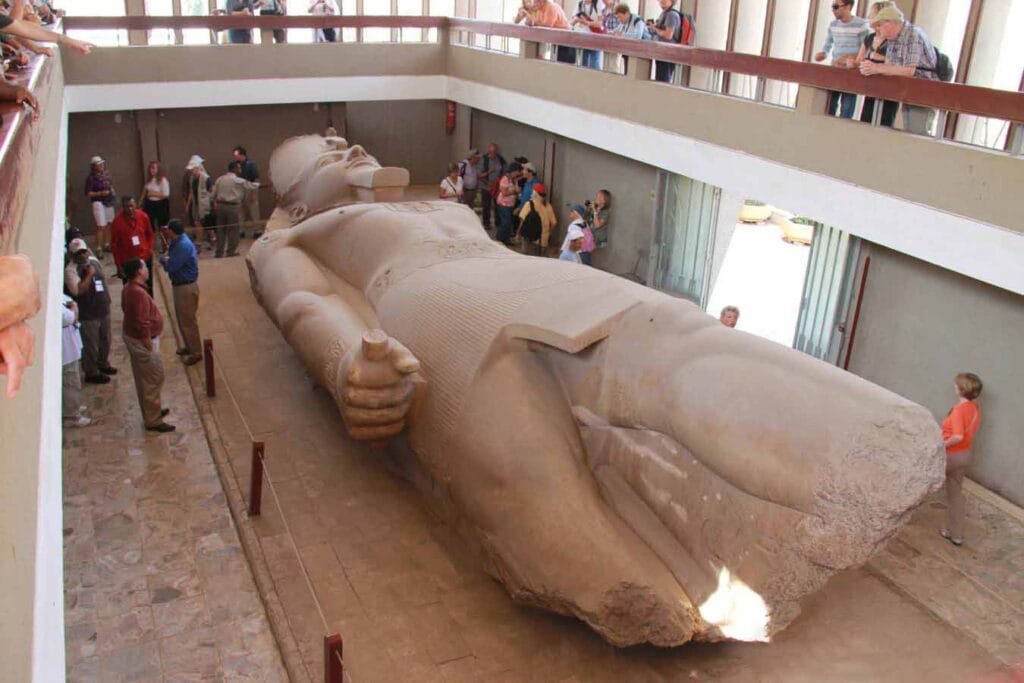
The Role of Ptah in Memphis and Egypt
Ptah, the primary deity worshiped at the Temple of Memphis, was one of the most significant gods in ancient Egypt. Unlike many other gods associated with specific natural forces or human experiences, Ptah was revered as the god of creation, craftsmanship, and the patron of artisans. Ancient Egyptians believed that Ptah created the universe by thinking and speaking it into existence. As the god of craftsmen and builders, Ptah’s influence extended over all artistic and architectural endeavors, making him a crucial figure in Memphis, known for its craftsmanship. Ptah was also viewed as a protector of the pharaoh, whose role was seen as divinely ordained. The pharaohs of Egypt, through ceremonies and offerings at the Temple of Memphis, maintained their close connection to the divine. The temple also symbolized royal legitimacy: it was the site where kings were believed to draw their power directly from the gods. This made Memphis a central point of both religious and political life. Temples dedicated to Ptah were not merely places of worship; they were powerful symbols of divine authority, where rituals reinforced the idea that Egypt’s rulers were earthly representatives of the gods, ensuring the continuity of cosmic and social order.
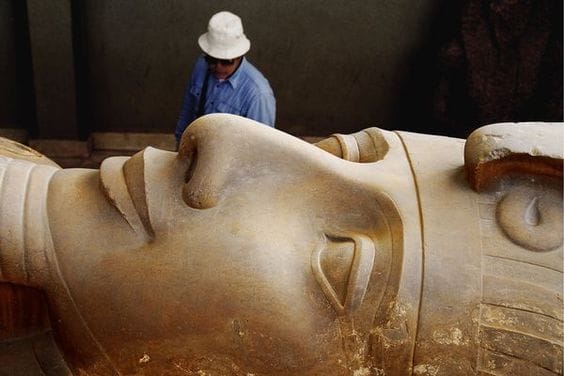
The Construction of the Temple of Memphis
The construction of the Temple of Memphis dates back to the Old Kingdom, though it was renovated and expanded by numerous pharaohs over the centuries. The temple complex was originally built to house the statue of Ptah, which was the central focus of worship and the symbol of the god’s divine power. Memphis was a prominent city, and its position as the capital of ancient Egypt meant that its architectural wonders, including the Temple of Ptah, were built on an imposing scale. The temple featured a large open courtyard where rituals and public ceremonies were held, with towering columns and grand walls adorned with intricate reliefs depicting gods, kings, and sacred rituals. The temple also included inner sanctuaries where priests performed secretive and sacred rites. Although much of the original structure of the temple has been destroyed, the remaining foundations, fragments of statues, and inscriptions give us a glimpse into the grandeur of the original complex. The temple’s design embodied the religious significance of Ptah, with its massive stone columns and intricately carved walls serving as symbols of divine stability and cosmic order, and reinforcing the importance of the pharaoh’s divine authority.
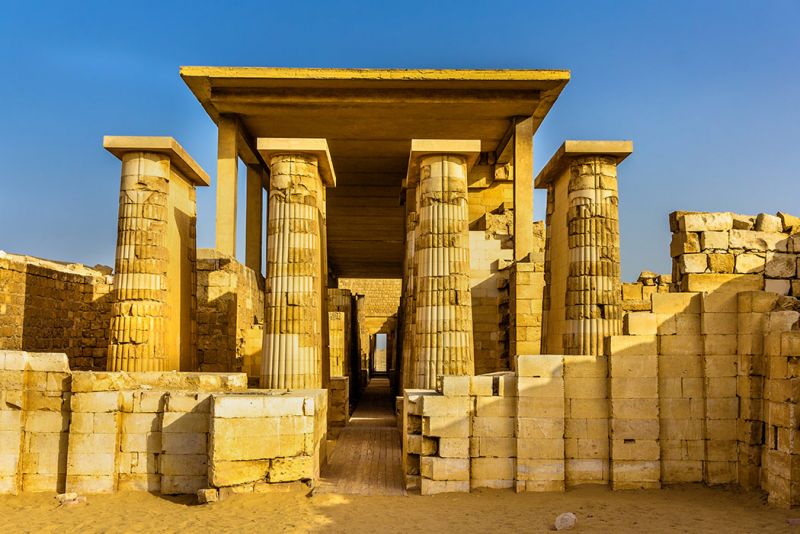
The Colossal Statue of Ptah
One of the most remarkable features of the Temple of Memphis was the colossal statue of Ptah, which stood as the focal point of the entire temple complex. This monumental statue was carved from solid granite and represented the god as a seated figure, holding a scepter, symbolizing his role as the ruler of the divine world. The statue’s sheer size was intended to reflect the immense power and authority of Ptah. This statue, along with other sculptural works in the temple, symbolized the connection between the divine and the earthly realm. Ptah was seen as the creator of all things, and the statue represented his ability to shape and influence both the physical and spiritual worlds. In the ancient Egyptian belief system, statues like this one were not simply artistic depictions but were considered to be imbued with the spirit of the god they represented. Worshippers and priests would come to the temple to make offerings to Ptah’s statue, seeking divine favor for themselves, the pharaoh, and the entire kingdom. Though much of the original statue has been destroyed, fragments of it can still be seen at the archaeological site, giving visitors a sense of the temple’s former grandeur and the divine significance placed on Ptah’s presence within it.
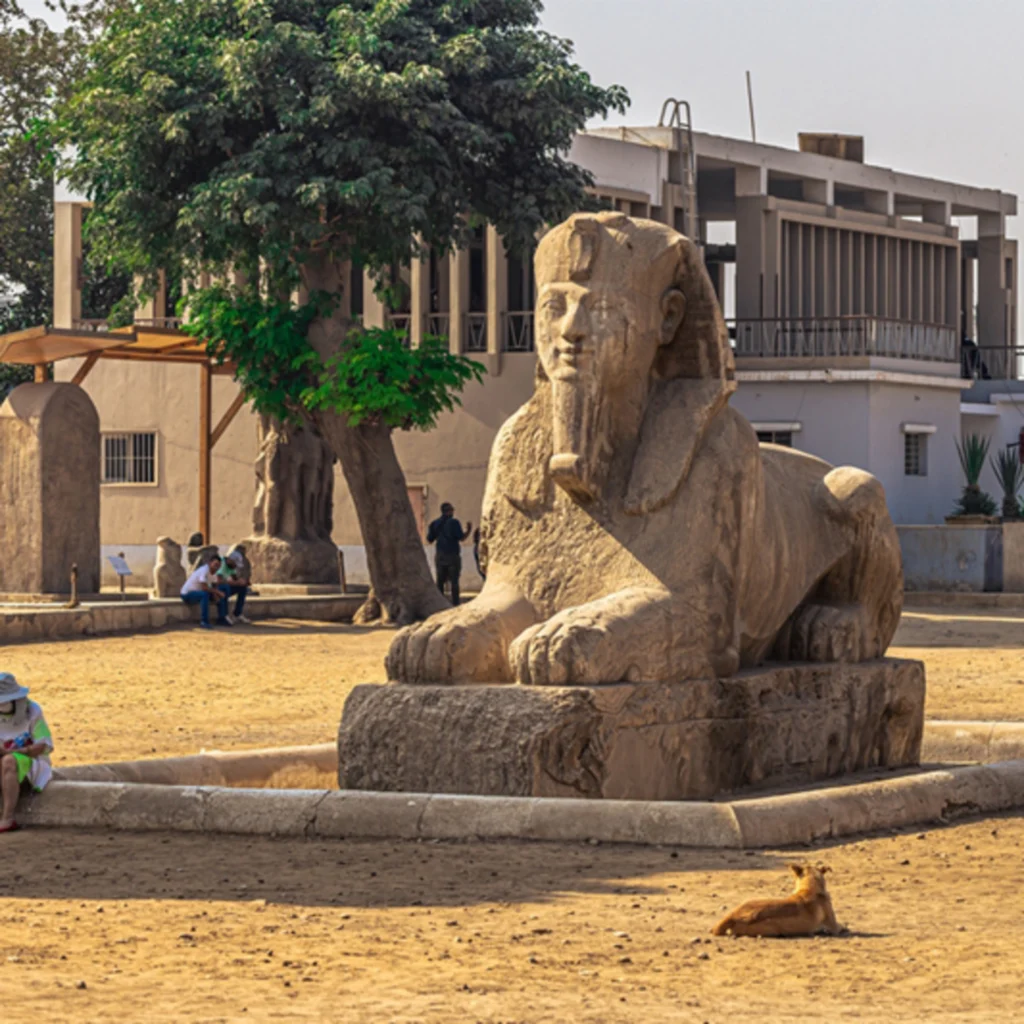
Religious Practices at the Temple of Memphis
Religious practices at the Temple of Memphis were a central part of daily life in ancient Egypt. The priests, who held considerable power in Egyptian society, performed rituals to honor Ptah and ensure the continued favor of the gods. These rituals often involved offerings of food, incense, and other symbolic items, which were believed to sustain the gods and keep the cosmic balance in check. The temple also hosted major festivals, which could draw worshippers from all across Egypt to participate in the celebrations. The most important religious activities focused on the divine connection between the pharaoh and Ptah, as the king was seen as the earthly representative of the gods. These rituals, performed in front of the Ptah statue, reinforced the king’s divine right to rule and solidified the pharaoh’s role as the protector of Egypt. The rituals at the temple were also linked to the maintenance of order, or maat, in the world. Ensuring the gods were pleased through regular offerings and ceremonies was believed to protect the kingdom from chaos and ensure its prosperity. The religious activities at the temple helped solidify the close relationship between Egypt’s rulers and their divine patrons, ensuring that both political and spiritual stability was maintained.

Decline of the Temple and Rediscovery
The decline of the Temple of Memphis began as Egypt’s political landscape changed. As the power of Memphis waned and other cities like Thebes rose in prominence, the temple gradually fell into disuse. Many of the temple’s stones and building materials were repurposed for other construction projects, particularly during the later periods of Egyptian history when foreign invaders, such as the Greeks and Romans, controlled the region. Over time, the once grand temple was reduced to ruins, and the city of Memphis itself began to fade from the historical spotlight. However, the temple’s historical significance did not go unnoticed by later civilizations. During the 19th and 20th centuries, archaeologists began excavating the site, uncovering fragments of the original Ptah statue, stone reliefs, and monumental inscriptions. These discoveries have shed light on the grandeur of the temple and have helped historians piece together the history of Memphis as an ancient religious and political center. Today, the site serves as an important location for those interested in Egyptology and provides valuable insight into the religious practices of ancient Egyptians.
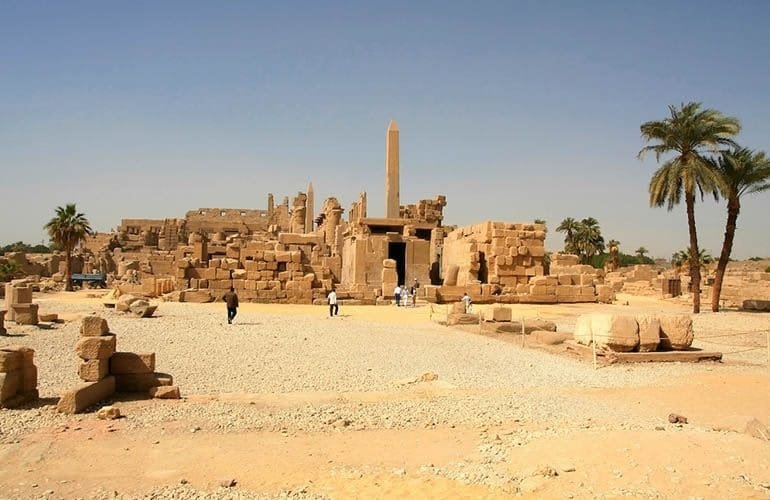
The Archaeological Remains of the Temple of Memphis
Despite the erosion of time, significant archaeological remains from the Temple of Memphis still exist. Visitors to the site today can explore the ruins and view remnants of the original structure, including the base of columns, sections of reliefs, and fragments of statues. The most notable discovery is the colossal statue of Ptah, whose broken fragments are scattered throughout the site. These pieces allow modern visitors to appreciate the size and grandeur of the original statue, which would have been a breathtaking sight in its complete form. Additionally, archaeologists have uncovered hieroglyphic inscriptions on the temple’s stone blocks, offering valuable insights into the religious and political activities that took place within its walls. The ongoing excavations at the site continue to reveal new information about the temple’s construction, the rituals performed there, and its role in ancient Egyptian society. These archaeological remains, though fragmented, offer a glimpse into one of Egypt’s most important ancient religious centers and are a testament to the skill and craftsmanship of the ancient Egyptians who built and maintained this sacred space.

Visiting the Temple of Memphis Today
Today, the Temple of Memphis is part of the larger Memphis archaeological site, located just south of Cairo. The site is easily accessible to visitors, who can explore the remnants of the temple and the surrounding area, which is rich with ancient history. In addition to the remains of the Temple of Ptah, visitors can also view the famous Sphinx of Memphis, a massive limestone statue that once served as the guardian of the temple complex. The site offers a unique opportunity to step back in time and witness the grandeur of ancient Egypt’s religious life. While much of the original temple has been destroyed, the fragments that remain provide valuable context for understanding the ancient Egyptians’ deep connection to their gods. For those interested in ancient Egyptian history, a visit to Memphis is a must, as it offers a comprehensive view of Egypt’s rich religious and cultural heritage. Today, the Temple of Memphis stands as a powerful reminder of the city’s once-central role in the ancient world and its lasting influence on Egyptian religious practices.
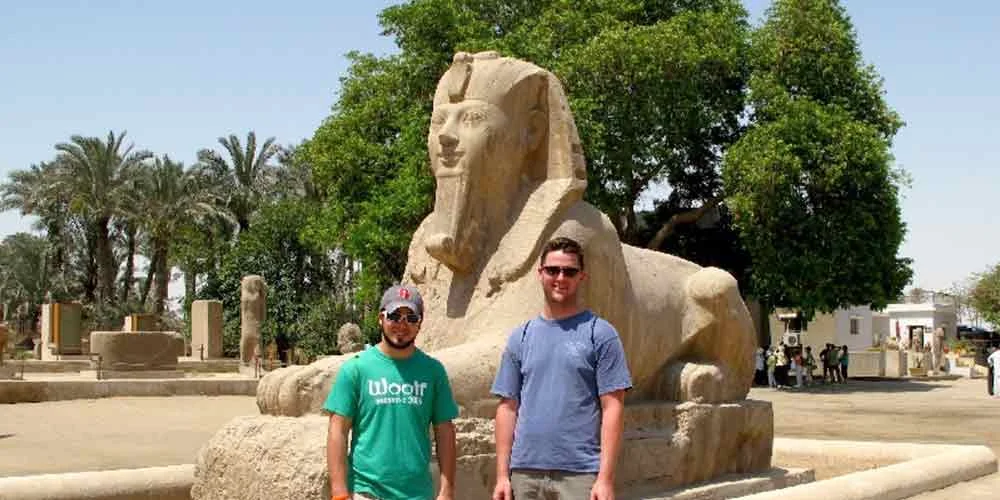
The Legacy of the Temple of Memphis
The Temple of Memphis continues to stand as a monumental symbol of ancient Egypt’s religious, cultural, and political heritage. Although much of it has crumbled with time, the remnants of the temple reveal its grandeur and importance. The temple’s connection to Ptah, the god of creation, as well as its role in supporting the divine kingship of the pharaoh, made it a central institution in Egyptian religious life. It was not just a place of worship but a key site where the legitimacy of the pharaoh was reaffirmed, and Egypt’s stability was maintained. The Temple of Memphis remains a powerful symbol of the spiritual relationship between the gods and the rulers of Egypt, and its legacy continues to inspire those who study ancient Egyptian culture and religion. Today, the temple is an important archaeological site, offering valuable insights into ancient Egyptian life and continuing to influence modern understandings of Egyptian civilization. The Temple of Memphis may have fallen into ruin, but its historical significance endures, leaving behind a lasting imprint on the history of Egypt and the ancient world.


